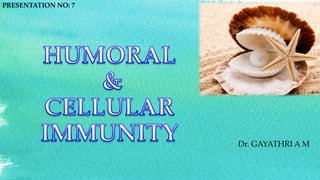This document discusses the history and key concepts of immunology. It describes some of the earliest observations of immunity in the 4th century BC by Thucydides. It then outlines major developments in vaccination by Jenner in 1790 and the later proposals of the germ theory of disease by Pasteur and the concept of acquired cellular immunity by Metchnikoff and Ehrlich in the late 19th century. The document also summarizes the three lines of defense in the immune system (non-specific, specific, and adaptive immunity), the roles of antibodies, B cells and T cells, and the processes of humoral and cell-mediated immunity.





































































































